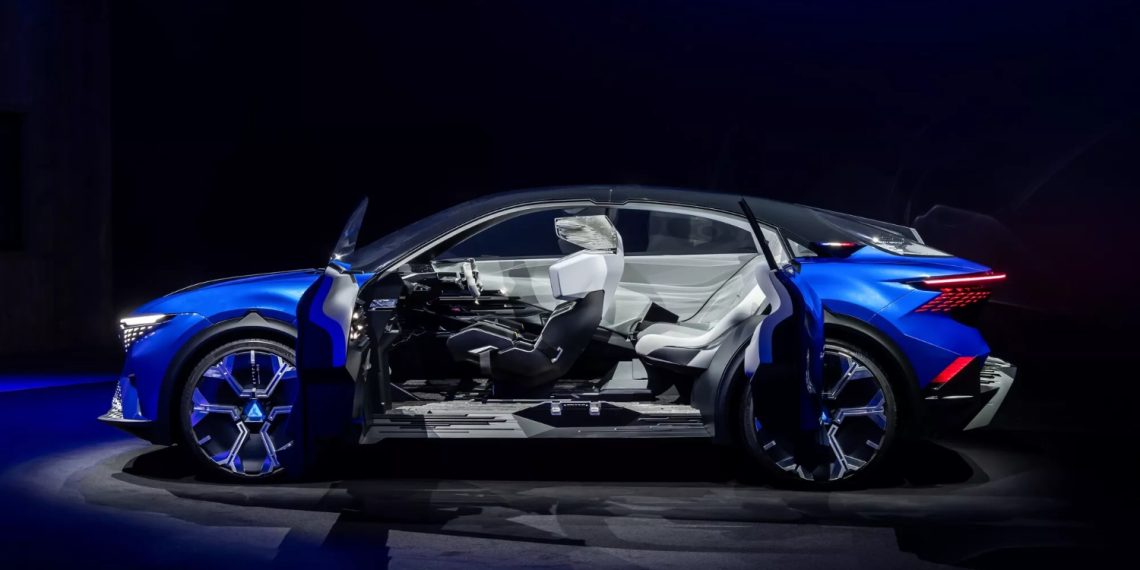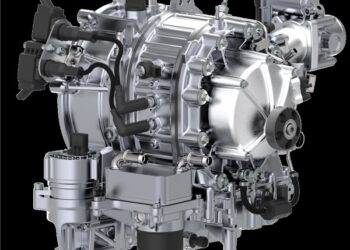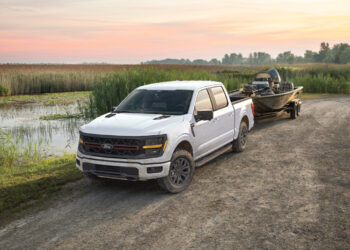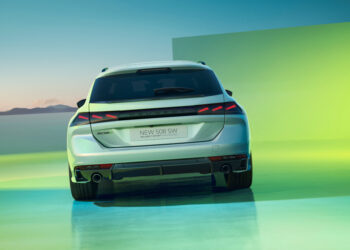The concept car A390_β anticipates the arrival of a sporty fastback that Alpine will launch in 2025. Following the philosophy established in each concept car, Alpine has adhered to this principle and viewed this prototype as an opportunity for the team to discuss and test new materials, delve deeper into the use of some that are identifiers of the brand, such as carbon fiber, or to test new manufacturing methods.
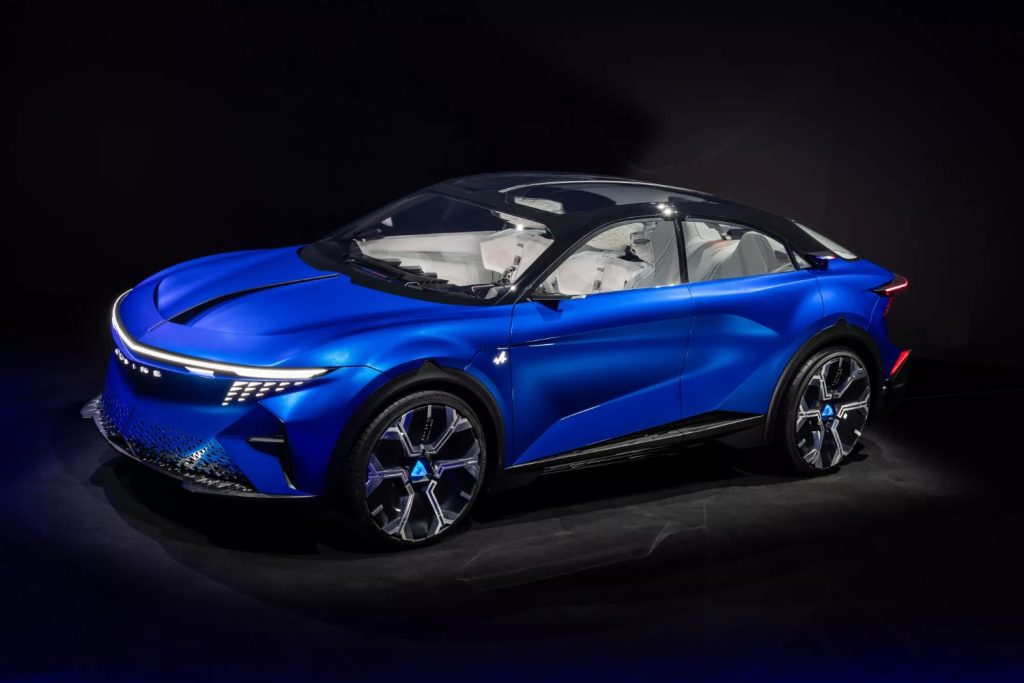
To achieve this, manufacturers choose to collaborate with experienced partners who possess extensive technological capabilities, adaptability, and processing of new materials that, in most cases, need to be both durable and lightweight, while also being environmentally friendly. This allows the associated brands to push their proposals to the limit, as it will not be a production vehicle, while manufacturers test how these materials and designs can be solutions that may become part of future production models.
In this way, the Alpine A390_β revealed in October 2024, showcased a futuristic design, particularly in its interior. In this regard, to create the key elements of the futuristic concept, Alpine partnered with two renowned French brands: Grupo Erpro and Compostos Lavoisier. The former is responsible for the headrests and various 3D prints, while the latter is responsible for something as important as the car’s floor, made from high-performance carbon by Lavoisier Composites, a Lyon-based start-up specializing in the development and manufacture of eco-friendly composite parts. This exclusive creation is made entirely from recycled materials sourced from the aerospace and solar industries.
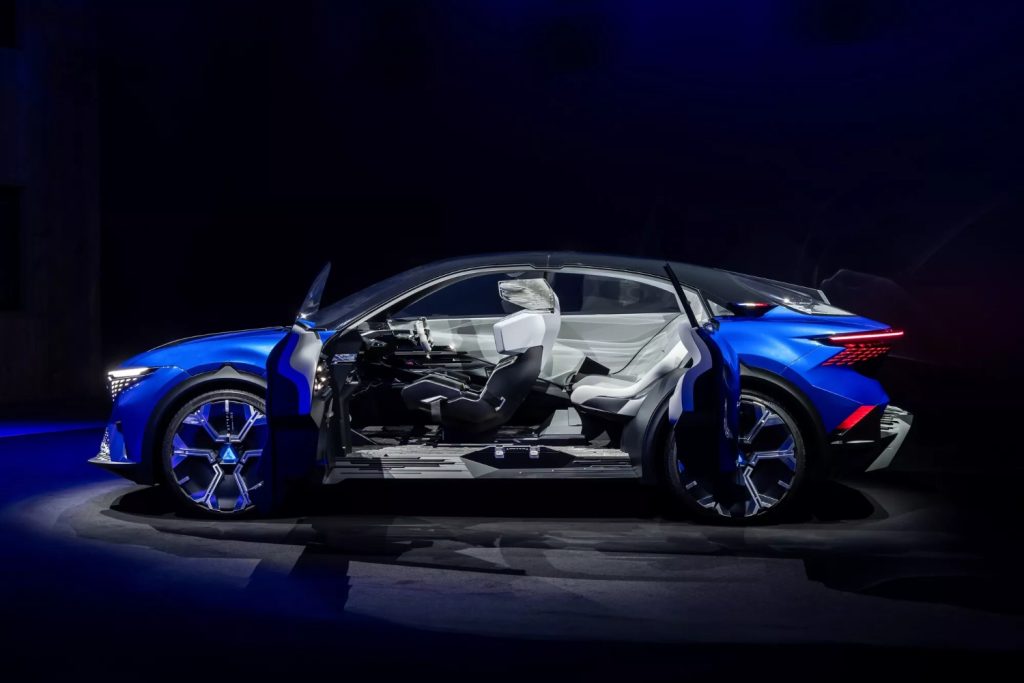
The interior of the Alpine A390_β is undoubtedly truly spectacular and, as the brand itself stated during the concept’s presentation, the model was inspired by Formula 1, especially the steering wheel and the front seats, which appear to have been taken from a Formula 1 single-seater. The exception is the headrest, made as a single piece with a transparent effect.
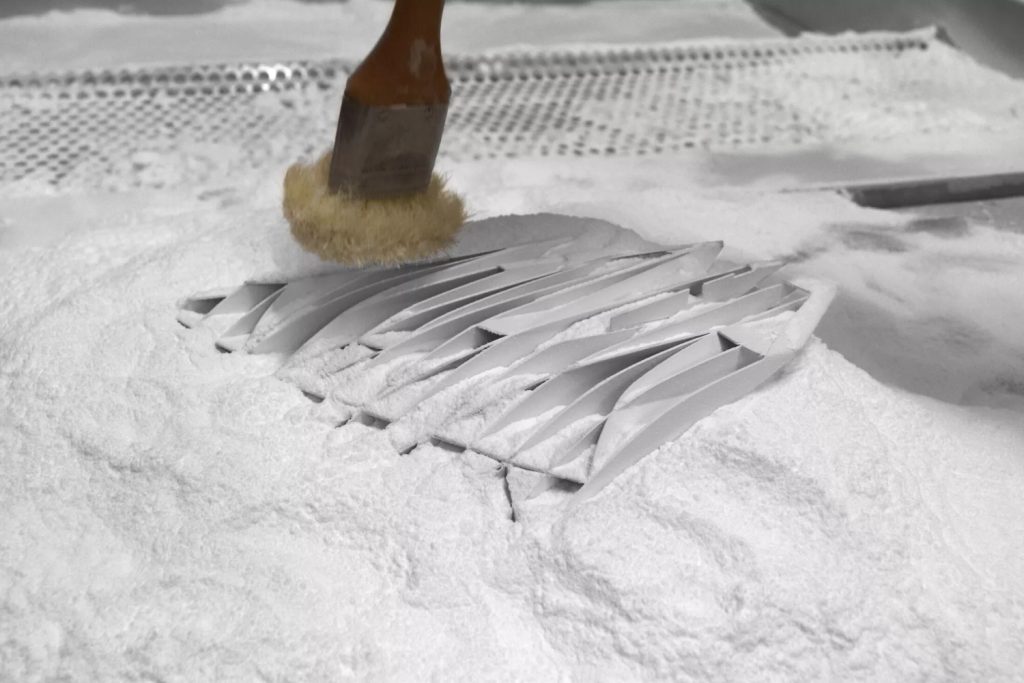
The piece created by the Erpro Group was produced using 3D printing with a biologically sourced elastomer, Pebax Rnew from Arkema, which is partially made from castor bean seeds. The company then printed several samples to find the ideal thickness, ensuring that the material appeared very lightweight while maintaining strength and flexibility. More than three weeks of full-time work were required to create the two spectacular headrests for the A390_B, marking a world premiere for this type of process in an automobile.
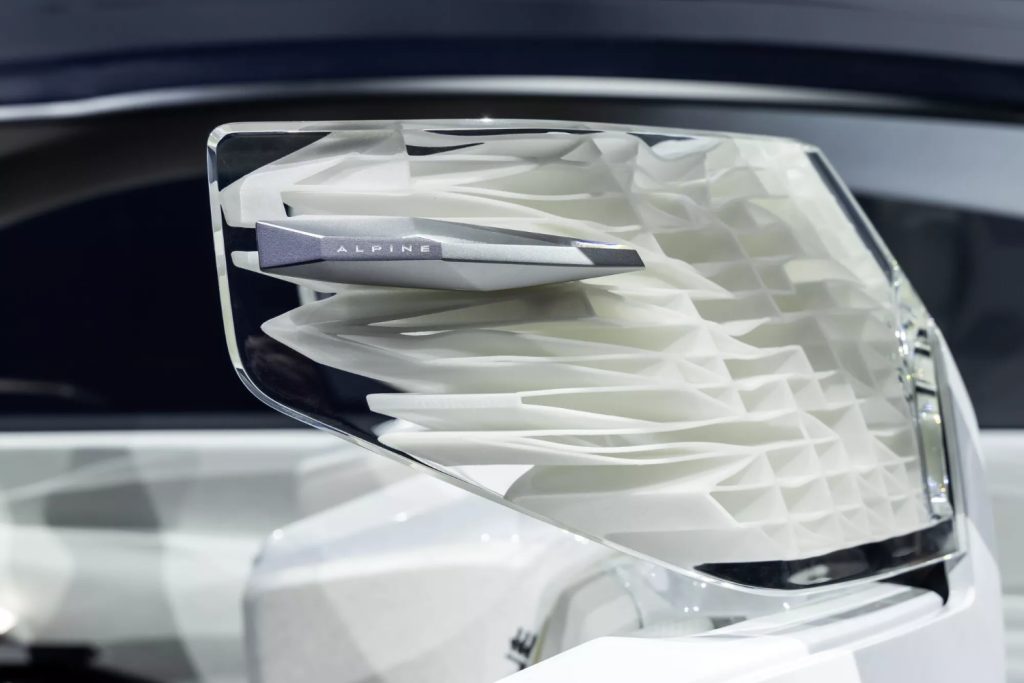
On the other hand, Lavoisier Composites, a specialist in the development and manufacturing of eco-friendly composite parts, is focused on the development of composite components produced through compression molding. This solution allows the use of materials with a high carbon fiber content to achieve very specific geometries.
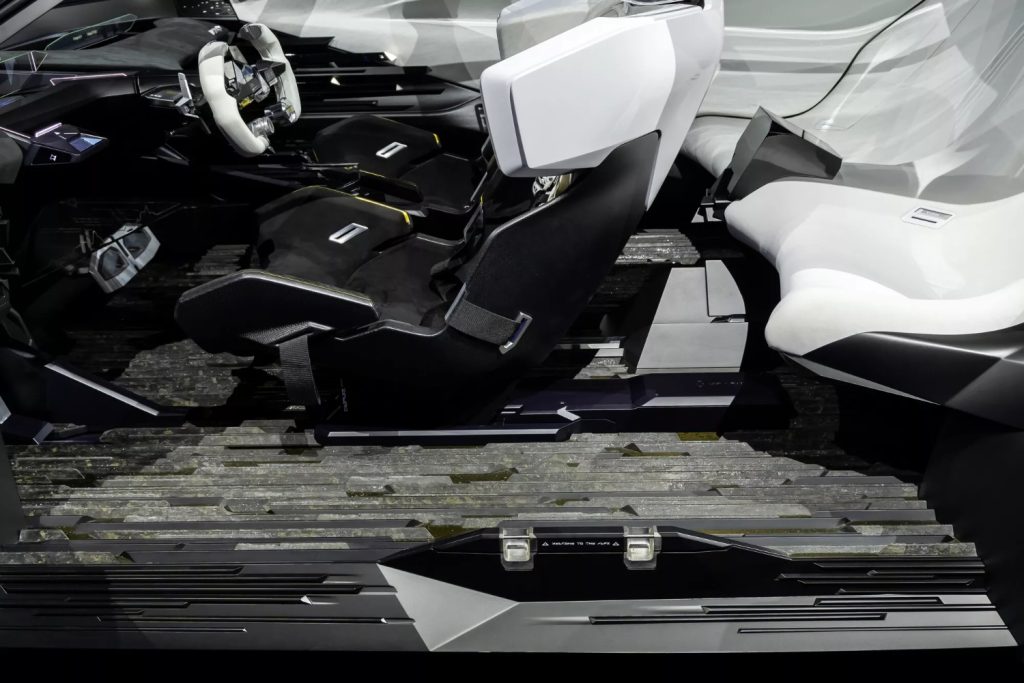
The challenge for Lavoisier was to give the A390_β floor a mineral aesthetic with the basaltic effect desired by the Alpine design team. To achieve this, high-performance carbon specialists produced a flooring made up of a multitude of triangular section elements, whose facets reveal the depth of carbon and the shine of silicon. This exclusive creation is entirely based on the 3D model envisioned by Alpine’s designers.
In addition to the aesthetic value of the flooring, Lavoisier Composites helped Alpine work with sustainable materials and demonstrated that another path is possible in the industry. Thanks to unique know-how in the reuse of high-performance materials, it is possible to manufacture structural components with a low environmental impact.
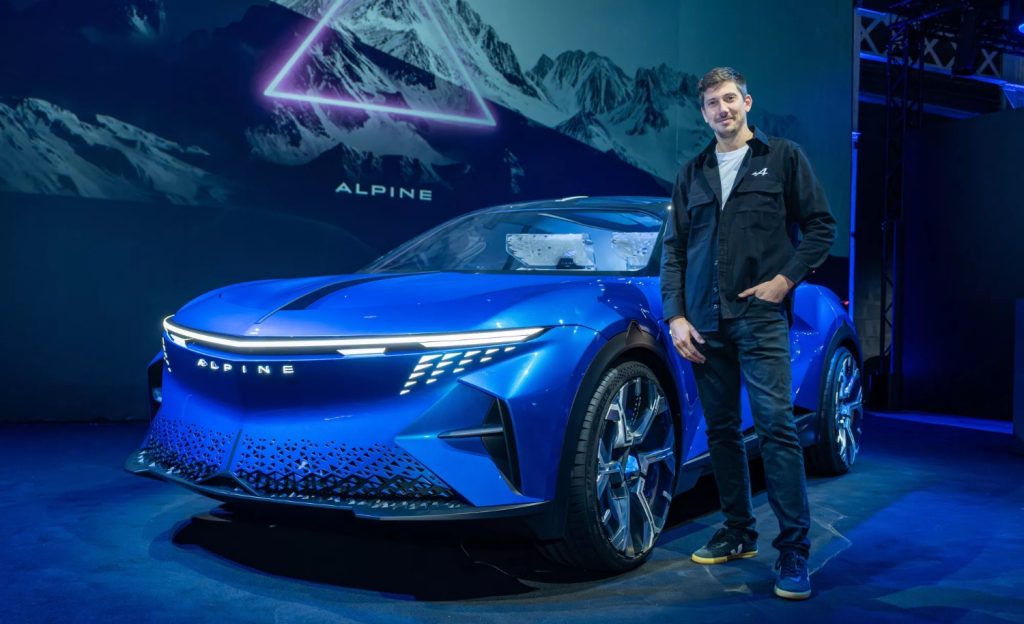
“Working closely with manufacturers near our design center, who share Alpine’s values and possess unparalleled know-how, is a powerful boost to inject more and more innovation into our future cars”, said Stéphanie Petit, chief designer of colors and materials at Alpine.

